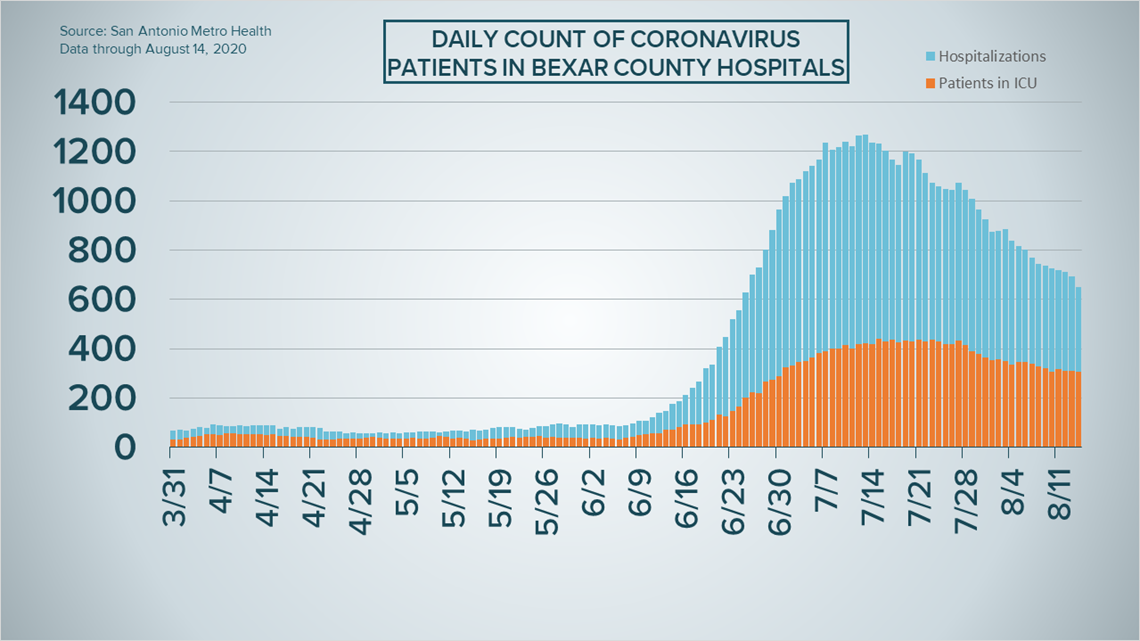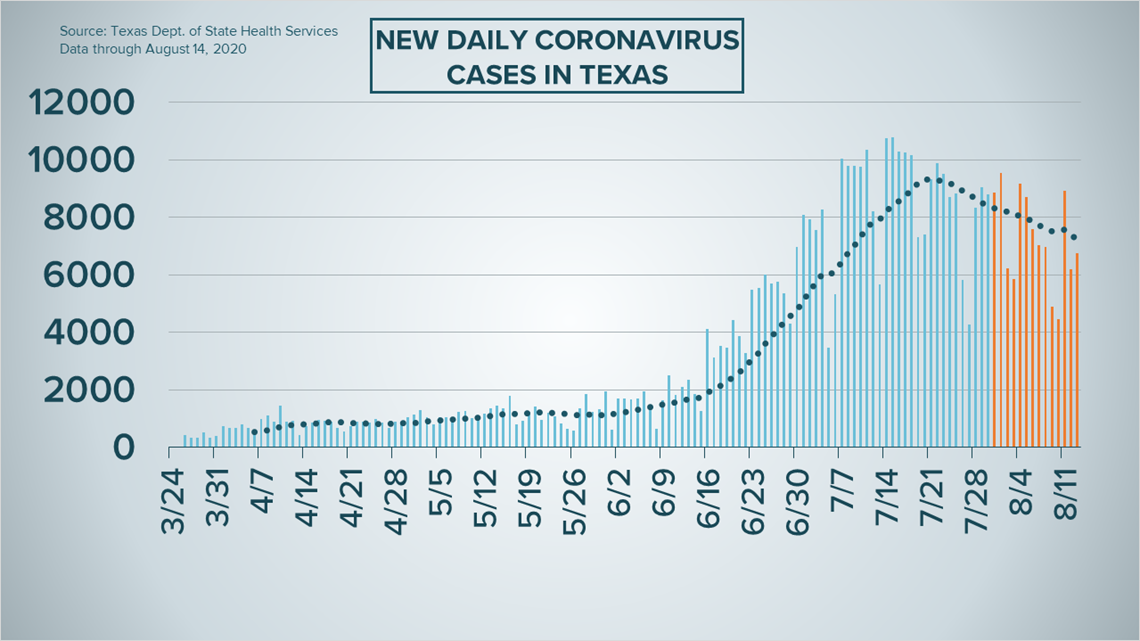SAN ANTONIO — We're tracking the latest numbers from the coronavirus pandemic in San Antonio and across Texas. Here are the latest numbers reported by Bexar and surrounding counties:
- Bexar County: 150 new cases were reported Friday, bringing the total number for the county to 43,823. The county death toll, meanwhile, rose to 578 after 18 additional fatalities were reported;
- Comal County: The county reported 59 new cases and no additional deaths Friday. There have been a total of 2,632 cases of COVID-19 in the county – including 2,062 confirmed cases – while 72 county residents have died. County officials say there are 467 active coronavirus cases, and 2,093 residents have recovered.
- Hays County: Officials in Hays County on Friday reported eight new cases in the county and three additional virus-related deaths. As of Friday evening, there were a total of 5,111 lab-confirmed cases in the county (2,649 of which are active) while the death toll increased to 41.
How Bexar County is trending
We're tracking how many coronavirus cases are confirmed in Bexar County each day from the time San Antonio Metro Health began reporting cases more than five months ago. Graphing those daily case numbers along a 14-day moving average provides an accurate picture of the curve in the San Antonio area and the direction we're heading amid the coronavirus.
On Friday, Mayor Ron Nirenberg reported an additional 150 cases of the novel coronavirus in Bexar County, bringing the total to 43,823. The seven-day average for the county for daily cases has decreased from 253 to 213.
The local death toll, meanwhile, rose to 578 after Nirenberg confirmed an additional 18 deaths from COVID-19 complications. Those deaths date back to as early as June 17.


Hospitalizations continue to trend downward, though the hospital system in San Antonio remains under high stress. On Friday, 651 residents were receiving treatment for virus symptoms. The number of residents on ventilators (195) and in intensive care (306) was also down slightly from Thursday.


Coronavirus in Texas
Texas health authorities on Friday reported an additional 7,018 cases of the coronavirus from across the state, bringing the total to 520,593. The death toll, meanwhile, rose to 9,602 after 313 more deaths from COVID-19 complications were reported.


The rate of hospitalized Texans continues to go down. On Friday, 6,632 were receiving treatment for COVID-19 symptoms, more than 200 fewer than on Thursday.
Lastly, an estimated 383,717 Texans have recovered from the virus during the ongoing pandemic.
Latest Coronavirus Headlines
- Second stimulus check: Trump blames Democrats for delay in more payments
- Gov. Greg Abbott says coronavirus hospitalizations, positive cases must decrease before he’ll allow bars to reopen in Texas
- San Marcos teachers and staff rally for safer school reopening options
- Coronavirus cancels 9/11 twin light beams tradition
- Biden calls for nationwide mask mandate
- First case of coronavirus in Boerne ISD confirmed
Coronavirus symptoms
The symptoms of coronavirus can be similar to the flu or a bad cold. Symptoms include fever or chills, cough, shortness of breath or difficulty breathing, fatigue, muscle or body aches, headache, new loss of taste or smell sore throat, congestion or runny nose, nausea or vomiting and diarrhea, according to the Centers for Disease Control.
Most healthy people will have mild symptoms. A study of more than 72,000 patients by the Centers for Disease Control in China showed 80 percent of the cases there were mild.
But infections can cause pneumonia, severe acute respiratory syndrome, kidney failure, and even death, according to the World Health Organization. Older people with underlying health conditions are most at risk.
On June 25, the CDC expanded the list of groups at a higher risk of severe illness due to coronavirus.
Experts determined there was consistent evidence these conditions increase a person's risk, regardless of age:
- Chronic kidney disease
- COPD (chronic obstructive pulmonary disease)
- Obesity (BMI of 30 or higher)
- Immunocompromised state (weakened immune system) from solid organ transplant
- Serious heart conditions, such as heart failure, coronary artery disease, or cardiomyopathies
- Sickle cell disease
- Type 2 diabetes
The CDC believes symptoms may appear anywhere from two to 14 days after being exposed.
Human coronaviruses are usually spread...
- Between people who are in close contact with one another (within about 6 feet).
- Through respiratory droplets produced when an infected person coughs, sneezes or talks. These droplets can land in the mouths or noses of people who are nearby or possibly be inhaled into the lungs.
- Some recent studies have suggested that COVID-19 may be spread by people who are not showing symptoms.
Help stop the spread of coronavirus
- Stay home when you are sick.
- Eat and sleep separately from your family members
- Use different utensils and dishes
- Cover your cough or sneeze with your arm, not your hand.
- If you use a tissue, throw it in the trash.

